Explore The Difference Between Stove, Range, and Oven
Updated: 26 Apr 2024
313
Cooking can be a lot of fun, but it’s important to know your kitchen tools. If you do not know the difference between stove, range, and oven and wonder what’s what? You’re not alone! These are all kitchen things, but they each have their own jobs. In this blog post, we’re going to explain these words in a simple way, so you can cook without confusion.
Imagine you want to make a tasty meal, but you’re not sure about stoves, ranges, and ovens. No worries! Many people mix up these words, but they really mean different things. Whether you’re new to cooking or just like making food at home, knowing the differences will help you cook better. So, let’s learn about stoves, ranges, and ovens – it’ll make cooking easier and more fun!

Stove: What Sets It Apart

- A stove is like a cooking station where you put your pots and pans to make food hot.
- It has burners on top, where you can place your pots.
- Burners make things hot by using gas flames or electricity.
- Different types of stoves:
- Gas stoves: Flames from gas make things hot
- Electric stoves: They use electricity to heat up.
- Induction stoves: They heat pots using magnets.
- Stoves are great for quick cooking and boiling water.
Range: More Than Just Cooking
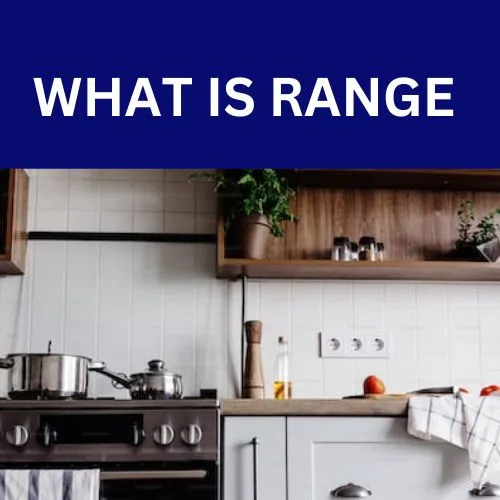
- A range is like a teamwork between a stove and an oven.
- It has burners on top, just like a stove.
- But, it also has an oven underneath for baking and roasting.
- Imagine it’s like having two kitchen helpers in one place.
- Ranges come in two types:
- Freestanding ranges: Standalone and can fit anywhere.
- Slide-in ranges Fit between kitchen cabinets for a tidy look.
- Ranges save space and are handy for cooking and baking together.
Oven: The Heart of Baking and Roasting
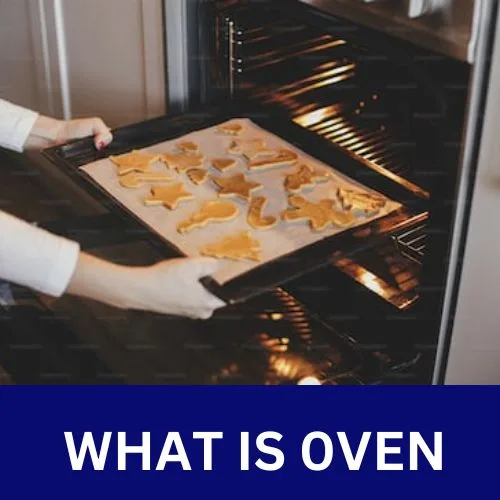
- An oven is like a magic box that bakes and roasts food.
- It doesn’t have burners like a stove, but it gets really hot inside.
- Ovens have different types:
- Conventional ovens: Heat comes from the bottom.Convection ovens: They have fans that make heat circulate, cooking things evenly.
- Microwave ovens: They use microwaves to heat food quickly.
- Ovens are perfect for baking cookies, roasting chicken, and making yummy desserts.
- They turn raw food into tasty treats!
Why Confusion on the Difference Between Stoves, Ranges, and Ovens
The confusion surrounding stoves, ranges, and ovens can be attributed to a few key reasons:
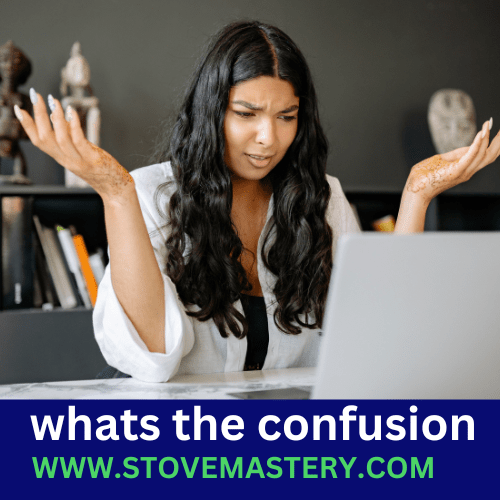
- Interchangeable Use: People often use these terms interchangeably, thinking they all mean the same thing. This misuse of language contributes to the confusion, making it harder to differentiate between the three appliances.
- Lack of Awareness: Many individuals may not have been properly introduced to the distinct functions of stoves, ranges, and ovens. Without a clear understanding, it’s easy to lump them together as generic cooking equipment.
- Evolving Technology: The advancement of kitchen technology has introduced newer appliances that combine features of stoves, ranges, and ovens. For example, some microwave ovens come with convection features for baking, further blurring the lines between these appliances.
- Different Regional Terminology: The terms used for these appliances can vary from one region to another. What is commonly referred to as a “stove” in one place might be called a “range” in another, adding to the confusion.
- Limited Exposure: Not everyone spends a lot of time in the kitchen or has access to a variety of kitchen appliances. Limited exposure to these devices can lead to uncertainty about their individual purposes.
- Home Layouts: In some homes, the setup might involve a combined unit that includes burners and an oven, making it difficult for residents to discern the differences between the components.
- Rapid Lifestyle Changes: In today’s fast-paced world, people may not always have the time to explore the nuances of cooking appliances. Quick meal preparation could lead to overlooking the distinctions between stoves, ranges, and ovens.
- Incomplete Education: Formal education on culinary matters may not always cover the technicalities of kitchen appliances, leaving individuals to rely on informal sources for information.
Comparing and Contrasting: Stove vs. Range vs. Oven
Here is the comparison between all these cooking accessories:-
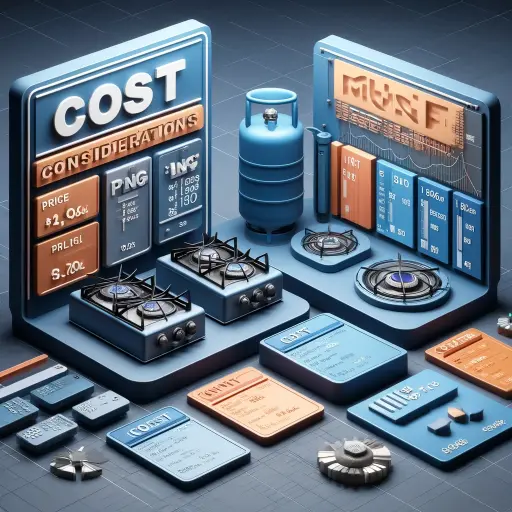
| Feature | Stove | Range | Oven |
|---|---|---|---|
| Definition | A device used for cooking food by applying heat directly to the bottom of a pot or pan. | A kitchen appliance that combines a cooktop (stovetop) with an oven, allowing for both stovetop cooking and baking. | An enclosed appliance designed for baking, roasting, and heating food. It does not have a cooktop. |
| Components | Cooktop only | Cooktop + Oven | Oven compartment only |
| Types | Gas, Electric, Induction | Gas, Electric, Induction | Gas, Electric |
| Usage | Used for cooking in pots and pans. | Used for both stovetop cooking and baking. | Primarily used for baking, roasting, and heating food. Some ovens have additional features like convection cooking. |
| Cooking Methods | Can be used for frying, boiling, simmering, etc. | Can be used for all stovetop cooking methods as well as baking, roasting, and broiling. | Mainly used for baking, roasting, and broiling. Some ovens have features like convection cooking for even heat distribution. |
| Installation | Can be standalone or built into a countertop. | Built into the kitchen cabinetry. | Built into the kitchen cabinetry. |
| Size | Compact, typically smaller than a range. | Larger, as it combines a cooktop and an oven. | Similar in size to the oven compartment of a range. |
| Advantages | Space-saving, can be placed anywhere with proper ventilation. | Combines cooking and baking in one unit. | Dedicated to baking and roasting, can have specialized features. |
| Disadvantages | Cannot bake or roast, limited to stovetop cooking. | Takes up more space, may be costlier. | Cannot be used for stovetop cooking. |
| Common Brands | Various (e.g., GE, Whirlpool, Samsung) | Various (e.g., GE, Whirlpool, Samsung) | Various (e.g., GE, Whirlpool, KitchenAid) |
Remember that specific features and functionalities may vary depending on the brand, model, and technology used in each appliance. Always refer to the manufacturer’s specifications for detailed information.
Tips for Choosing the Right Appliance
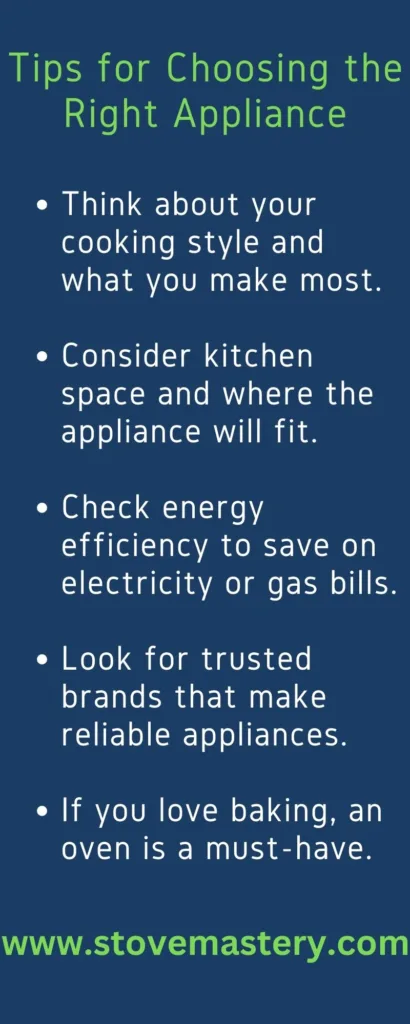
- Think about your cooking style and what you make most.
- Consider kitchen space and where the appliance will fit.
- Check energy efficiency to save on electricity or gas bills.
- Look for trusted brands that make reliable appliances.
- If you love baking, an oven is a must-have.
Maintenance and Care
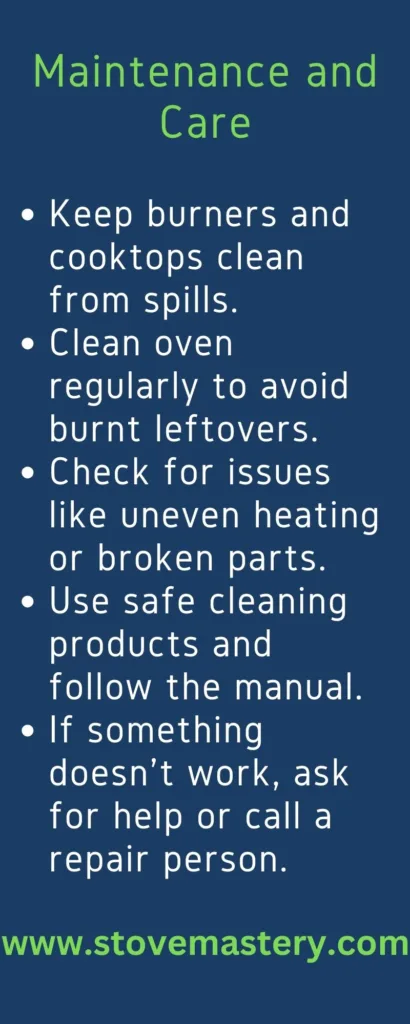
- Keep burners and cooktops clean from spills.
- Clean oven regularly to avoid burnt leftovers.
- Check for issues like uneven heating or broken parts.
- Use safe cleaning products and follow the manual.
- If something doesn’t work, ask for help or call a repair person.
Conclusion:
So, now you know the scoop on stoves, ranges, and ovens! These kitchen helpers each have their own special jobs. A stove is where you cook with pots and pans, a range is like having a stove and oven in one, and an oven is the baking and roasting magician. Remember, stoves don’t bake, and ranges are a cooking duo, while ovens turn raw ingredients into yummy treats.
With this knowledge, you’re ready to rock the kitchen. Whether you’re a beginner or a cooking whiz, understanding these appliances will make your culinary adventures smoother. So, next time you’re in the kitchen, you’ll be able to choose the right tool for the job and create delicious meals that everyone will enjoy. Happy cooking!
Frequently Asked Questions (FAQs)
Q1: What’s the difference between a stove, a range, and an oven?
A stove is where you cook using pots and pans on top of burners. A range combines burners and an oven in one unit. An oven is just for baking and roasting, without burners.
Q2: Can I use a stove for baking?
No, stoves don’t have ovens, so baking isn’t possible on them. You need an oven for baking.
Q3: Are all ranges the same?
No, there are freestanding and slide-in ranges. Freestanding ranges stand-alone, while slide-in ranges fit between kitchen cabinets for a neat look.
Q4: What’s the difference between a conventional oven and a convection oven?
In a conventional oven, heat comes from the bottom. In a convection oven, fans circulate the heat, cooking food more evenly and quickly.
Q5: Can I warm up food in an oven or range?
Yes, ovens are good for reheating food, while ranges with an oven can also warm up meals. If you want quick reheating, a microwave oven is more suitable.
Q6: Is a range the same as a stove?
No, a range is not the same as a stove. A range includes both a cooktop (burners) and an oven in a single appliance, while a stove typically refers only to the cooktop part.
Q7: Why do they call a stove a range?
The term “range” historically referred to a cooking appliance that included a built-in oven and burners. Over time, the word evolved to encompass a combination of both cooking elements, leading to the interchangeable use of “range” and “stove.”
Q8: What is a range in a kitchen?
A range in a kitchen is a versatile appliance that combines a cooktop (burners) and an oven in one unit. It provides both stovetop cooking and baking capabilities, making it a convenient all-in-one cooking solution.
Q9: What is the difference between a range and a hob?
A range combines a cooktop and an oven in a single appliance. A hob, on the other hand, refers specifically to the cooktop part of a range or stove – the surface with burners where you place your pots and pans.
Sources
- Difference Between Range and Stove and Oven
- Patterns of Stove Usage after Introduction of an Advanced Cookstove: The Long-Term Application of Household Sensors
- Oven, stove, range—what’s the difference, anyway?
Please Write Your Comments